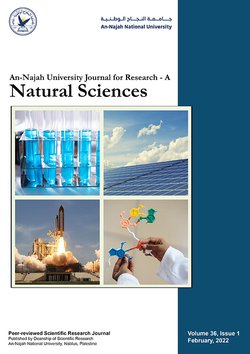Estimating Victimization Rates, Trends and Risk Factors in Palestine
Authors:
Article info
2012-12-23
2014-01-26
2014-01-26
61 - 84
Keywords
Abstract
This paper examines different risk factors that are most influential in identifying potential victims who have the greatest risk to be victimized in Palestine. The goal of this is to introduce a powerful statistical model that can be used in estimating the prevalence rates, trends and risk factors for a specific phenomenon such as victimization in Palestine as well as in other similar phenomena. The risk factors for being victimized in Palestine including many demographic, economic and social variables have been studied. The goal is to find those significant risk factors and identify the characteristics of the persons who are prone to tangible losses. The data used in the analysis cover all the Palestinian Territories including the West Bank, Gaza Strip and East Jerusalem as of 2008 and has been gathered by the Palestinian Central Bureau Of Statistics. Logistic regression model has been used in the analysis, and revealed that the significant influential factors on victimization are sex and owning a car. The effects of each factor, its odds ratio and risk ratio are examined. The model has been applied to estimate the probability of a person to be victimized and to classify the persons who are vulnerable to be victimized, and succeeded in correctly classifying 64% of people who have really fallen victims and 96% of people who are unbeatable to crime. The general percentage of correct classification was 93.5%.
Okasha, M., & NouralDin, N. (2014). Estimating Victimization Rates, Trends and Risk Factors in Palestine. An-Najah University Journal for Research - A (Natural Sciences), 28(1), 61–84. https://doi.org/10.35552/anujr.a.28.1.992
[1]M. Okasha and N. NouralDin, “Estimating Victimization Rates, Trends and Risk Factors in Palestine,” An-Najah University Journal for Research - A (Natural Sciences), vol. 28, no. 1, pp. 61–84, Jan. 2014, doi: 10.35552/anujr.a.28.1.992.
Okasha, Mahmoud, and Nisreen NouralDin. “Estimating Victimization Rates, Trends and Risk Factors in Palestine.” An-Najah University Journal for Research - A (Natural Sciences), vol. 28, no. 1, Jan. 2014, pp. 61–84. Crossref, https://doi.org/10.35552/anujr.a.28.1.992.
1.Okasha M, NouralDin N. Estimating Victimization Rates, Trends and Risk Factors in Palestine. An-Najah University Journal for Research - A (Natural Sciences) [Internet]. 2014 Jan;28(1):61–84. Available from: http://dx.doi.org/10.35552/anujr.a.28.1.992
Okasha, Mahmoud, and Nisreen NouralDin. “Estimating Victimization Rates, Trends and Risk Factors in Palestine.” An-Najah University Journal for Research - A (Natural Sciences) 28, no. 1 (January 2014): 61–84. https://doi.org/10.35552/anujr.a.28.1.992.
تقدير معدلات واتجاهات وعوامل المخاطرة للإيذاء في فلسطين
المؤلفون:
معلومات المقال
2012-12-23
2014-01-26
2014-01-26
61 - 84
الكلمات الإفتتاحية
الملخص
تبحث هذه الورقة في عوامل المخاطرة المختلفة للإيذاء في فلسطين للتعرف على العوامل الأكثر تأثيرا في تحديد ضحايا الإيذاء المحتملين والمفيدة في التعرف على ضحايا الجريمة في فلسطين، كما تقدم الورقة أسلوباً إحصائياً متقدماً كنموذج لتحليل بيانات الإستبانات يمكن من خلاله تقدير معدلات واتجاهات ظاهرة معينة والتعرف على عوامل المخاطرة لها مثل ظاهرة الإيذاء في فلسطين، وقد تم دراسة معنوية العديد من عوامل المخاطرة على الإيذاء في فلسطين مثل عوامل المنطقة الجغرافية والمتغيرات الديموغرافية وبعض المتغيرات الاقتصادية والاجتماعية. وتهدف الورقة من خلال ذلك إلى التعرف على عوامل المخاطرة المعنوية والمؤثرة على الإيذاء وتحديد خصائص الأشخاص الأكثر عرضة لخسائر ملموسة. وقد بنيت الدراسة على تحليل إحصائي لبيانات عن المجتمع الفلسطيني تغطي كل الأراضي الفلسطينية بما فيها الضفة الغربية وقطاع غزة والقدس الشرقية خلال العام 2008، حيث تم الحصول على هذه البيانات من الجهاز المركزي للإحصاء الفلسطيني، وتم استخدم نموذج الانحدار اللوجستي الإحصائي في التحليل والكشف عن أكثر العوامل المعنوية إحصائياً تأثيرا على الإيذاء في فلسطين وتبين من التحليل أنها تمثلت في متغيري الجنس وامتلاك الأسرة لسيارة خاصة، كما تم فحص آثار كل عامل من عوامل المخاطرة، ونسب الخلاف والمخاطرة لكل متغير، إذ يمكن استخدام النموذج المقترح في تقدير احتمال أن يكون شخص ما ضحية للإيذاء خلال عام معين، وكذلك التعرف على فئة الأفراد الأكثر عرضة ليكونوا ضحايا محتملين، ونجح النموذج في تصنيف الأفراد الذين وقعوا ضحايا للإيذاء حقاً في عينة الدراسة بشكل صحيح بنسبة 64٪ من مفردات عينة الدراسة، ونسبة 96٪ من الأشخاص الذين لم يتعرضوا للإيذاء في فلسطين، وبشكل عام كانت نسبة التصنيف الصحيحة هي 93.5٪.
Okasha, M., & NouralDin, N. (2014). Estimating Victimization Rates, Trends and Risk Factors in Palestine. An-Najah University Journal for Research - A (Natural Sciences), 28(1), 61–84. https://doi.org/10.35552/anujr.a.28.1.992
[1]M. Okasha and N. NouralDin, “Estimating Victimization Rates, Trends and Risk Factors in Palestine,” An-Najah University Journal for Research - A (Natural Sciences), vol. 28, no. 1, pp. 61–84, Jan. 2014, doi: 10.35552/anujr.a.28.1.992.
Okasha, Mahmoud, and Nisreen NouralDin. “Estimating Victimization Rates, Trends and Risk Factors in Palestine.” An-Najah University Journal for Research - A (Natural Sciences), vol. 28, no. 1, Jan. 2014, pp. 61–84. Crossref, https://doi.org/10.35552/anujr.a.28.1.992.
1.Okasha M, NouralDin N. Estimating Victimization Rates, Trends and Risk Factors in Palestine. An-Najah University Journal for Research - A (Natural Sciences) [Internet]. 2014 Jan;28(1):61–84. Available from: http://dx.doi.org/10.35552/anujr.a.28.1.992
Okasha, Mahmoud, and Nisreen NouralDin. “Estimating Victimization Rates, Trends and Risk Factors in Palestine.” An-Najah University Journal for Research - A (Natural Sciences) 28, no. 1 (January 2014): 61–84. https://doi.org/10.35552/anujr.a.28.1.992.
An-Najah National University
Nablus, Palestine
Nablus, Palestine
- P.O. Box
- 7, 707
- Fax
- (970)(9)2345982
- Tel.
- (970)(9)2345560
- (970)(9)2345113/5/6/7-Ext. 2628
- [email protected]
- EIC
- Prof. Ismail Warad
An-Najah University Journal for Research - A (Natural Sciences) by An-Najah University, Nablus, Palestine is licensed under CC BY-NC 4.0
